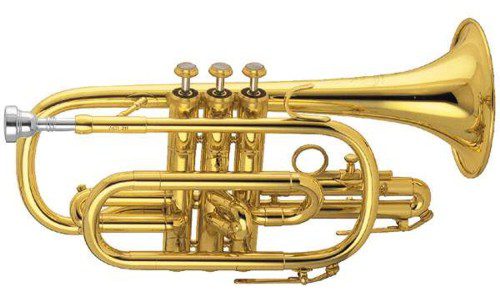How to learn to sing if you have no hearing, or, What to do if “a bear stepped on your ear”?
Contents
It happens that a person really wants to learn to sing, but the people around him, often ignorant, tell him that nothing will work out because he supposedly has no hearing. Is this really true? How can a person who “has no ear for music” learn to sing?
In truth, the concept of “lack of hearing” (I mean, musical) is incorrect. Every person has an innate ability to distinguish pitch. Only in some it is well developed, in others – not so much. Some peoples of the East are considered the most musical – pitch is an integral part of their speech. Therefore, they have no problems with musicality. It’s not that the Russian language is not so rich in this regard, it’s just structured differently. How can Russians learn to sing? Read on! Something else is important…
If everyone has hearing, then why doesn’t everyone sing?
So, everyone has an ear for music. But besides this, there is such a thing as coordination between voice and hearing. If it is absent, then the person hears the notes and distinguishes their pitch, but cannot sing correctly, simply because he has no idea how to do it. However, this is not a death sentence; you can learn to sing with absolutely any initial data.
The main thing is systematic and targeted training. And these are not general words. This is really what you need – just practice, work on yourself, learn to sing the same way you once learned to walk, talk, hold a spoon, read or drive a car.
How to find out the range of your voice?
Most often it happens that a person can represent notes with his voice, but in a very limited range. If you have access to a piano, find (or have someone find and play) the note C. Try singing it. It should sound in unison with your voice, merge. First sing it “to yourself”, and then out loud. Now press the keys in order and sing them, for example, on the syllable “la”.
By the way, if you decide to do it yourself, then the article “What are the names of the piano keys” will help you get acquainted with the arrangement of notes on the keyboard. What if you don’t have access to the tool? There is also a way out! About this in the article – “12 useful music applications in contact”.
If you were able to sing more than 5 keys, that’s very good. If not, try the following exercise. Sing the lowest sound you can. And from it, rise up with your voice (to the sound “u”, as if an airplane is taking off). Raise your voice to the highest pitch you can sing. There is another option – squeak in a voice like a bird, sing, for example, “ku-ku” in a very thin voice. Now gradually go down, continuing to sing this syllable. Moreover, we sing it abruptly, not smoothly.
The most important thing is to hit the first note cleanly!
The most important thing in learning songs is to sing the first note purely. If you take it exactly, it will be easier to sing the whole line. Therefore, to begin with, take simple children’s songs to learn (you can use a kindergarten program), not too fast. If there is no piano, record the first sound on a dictaphone and try to sing it clearly. For example, the song “Cockerel is a golden comb” is suitable. Listen to the first sound and then sing it: “pe.” Then sing the entire line.
So so so! Just let’s not put everything on the back burner, huh? Let’s start practicing right now! Here’s a good soundtrack for you, press the “play” button:
[audio:https://music-education.ru/wp-content/uploads/2013/07/Petushok.mp3]But just in case, here are the words of the nursery rhyme about a cockerel with a golden comb that everyone knows from childhood:
Does not work? Draw a melody!
Another technique that helps you understand the melody is its visual representation. Moreover, you don’t have to know the notes, but draw a melody in an ordinary notebook. We write “Pe-tu-shock.” Above this word we draw three arrows – two in place and one down. As you sing, look at this diagram and it will be easier for you to remember where the melody is going.
Ask a person with a musical education (or at least a person with “hearing”) to help you. Let him record for you on a dictaphone the first sounds with which the song begins, then the entire melody of the song. In addition, ask him to draw a melody for you in a regular notebook (the drawing should be above or below the text in order to see which syllable this or that movement belongs to). As you sing, look at this diagram. Even better – help yourself with your hand, i.e. show the movement of the melody.
In addition, you can write down the scale and listen to it throughout the day, and then sing it with or without music. Ask your assistant to record for you a few simple children’s songs, such as “Little Christmas Tree”, “Grey Kitty” (absolutely any person who is more or less knowledgeable in music can help you with this, even a music worker from a kindergarten, even a student from a music school) . Listen to them several times and try to imitate the melody yourself. After that, sing.
Again about the need to work on yourself
Of course, classes with a teacher will be the most effective, but if you do not have such an opportunity, use the above tips. And to help you – materials on the topic “How to develop an ear for music?”
Additionally, you can take vocal lessons through a specially recorded, targeted video course. Read about how to purchase such a course here:
Remember that classes must be regular. If you don’t get much done today, believe me, in a week or two there will definitely be changes. For a musician, observing success after a while is the norm, any smart person will tell you this. An ear for music is a human ability that is constantly developing, and once you start practicing, even simply listening to your favorite music will magically develop this ability in you.
PS We have an article about how to learn to sing! We would like to ask you not to be embarrassed by the picture you see on the page. Some people sing in the shower, some people sing in the shower! Both are good! Have a good mood!





